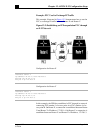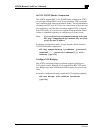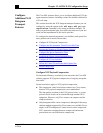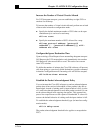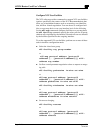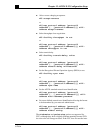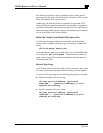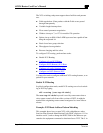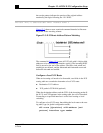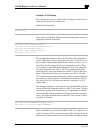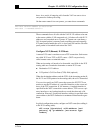
Chapter 12: AI2524 X.25 Configuration Steps
August 1997 Page 12-29
2524UM
Configure X.25
Routing
The X.25 software implementation allows virtual circuits to be routed
from one X.25 interface to another and from one router to another. The
routing behavior can be controlled with switching and X.25-over-TCP
(XOT) configuration commands, based on a locally built table.
X.25 encapsulation can share an X.25 serial interface with the X.25
switching support. Switching or forwarding of X.25 virtual circuits
can be completed two ways:
z
Incoming calls received from a local serial interface running X.25
can be forwarded to another local serial interface running X.25.
This is known as local X.25 switching because the router handles
the complete path. It does not matter whether the interfaces are
configured as DTE or DCE device because the software takes the
appropriate actions.
z
An incoming call also can be forwarded to another Cisco router
over a LAN using the TCP/IP protocols. Upon receipt of an in-
coming call, a TCP connection is established to the router that is
acting as the switch for the destination. All X.25 packets are sent
and received over this reliable data stream. Flow control is main-
tained end-to-end. This is known as X.25-over-TCP or XOT.
(XOT was previously called remote switching or tunneling.) It
does not matter whether the interfaces are configured as DTE or
DCE, because the software takes the appropriate actions.
Running X.25 over TCP/IP provides a number of benefits. The data-
gram containing the X.25 packet can be switched by other routers
using their high-speed switching abilities. X.25 connections can be
sent over networks running only the TCP/IP protocols. The TCP/IP
protocol suite runs over many different networking technologies, in-
cluding Ethernet, Token Ring, T1 serial, and FDDI. Thus X.25 data
can be forwarded over these media to another router where it can b
output to an X.25 interface.
When the connection is made locally, the switching configuration is
used; when the connection is across a LAN, the XOT configuration is
used. The basic function is the same for both types of connections, but
different configuration commands are required for each type of con-
nection.



